Outer Space & Universe
Outer Space & Universe
Space, also known as outer space, is the near-vacuum between celestial bodies. It is where everything (all of the planets, stars, galaxies and other objects) is found.
On Earth, space begins at the Kármán line (100 km above sea level). This is where Earth's atmosphere is said to stop and outer space begins. This is not a firm boundary but is a convention used by scientists and diplomats.
Items in space are free to move back and forth; up and down; and left and right. These three dimensions are what make 3D space. Items also move forward through time, which is sometimes called the fourth dimension.
The majority of space contains very little matter and so most of it is a vacuum. Scientists do not know how big space is but we do know that space is extremely big, and is always expanding.
According to the big bang theory, all matter and energy in the Universe was compressed into a very small space. Then it exploded and started expanding. Space is still growing in size today; this means the distance from one galaxy to distant galaxies is getting longer.
Gravity is the force that keeps the Moon in orbit around the Earth and the planets in orbit around the Sun. Gravity can stretch and bend space similar to how a heavy ball placed on a stretched sheet of rubber will cause the rubber to stretch. The scientist who discovered that space can bend is named Albert Einstein. How gravity bends space is part of his theory of general relativity.
Astronauts, Cosmonauts, Taikonauts and Spationauts
An astronaut is any person who is trained by NASA to travel and perform tasks in space. Although the space traveler may not necessarily be a United States citizen, each astronaut does go through a rigorous training regiment by the National Aeronautics and Space Administration. Other space travelers go by other names then astronaut depending on their country of origin.
In the United States, astronaut is derived from the Greek words ástron (star) and nautis (sailor). While, in Russia, a space traveler goes by the name космонавт (English: cosmonaut), which is derived from the Greek words kosmos (universe) and nautis (sailor). Westerners call a space traveler from China a taikonaut, based on the 1998 writings of Chiew Lee Yik and Chen Lan where the term tàikōng (great emptiness), Chinese for “space”. In China, the term yuháng yuán (universe navigator) is used for space traveler.
Only the United States of America (United States), Russia (earlier, the Union of Soviet Socialist Republics), and the People’s Republic of China (China) have sent manned spacecraft into space. Other countries have assisted these countries by sending their own space travelers on space missions. For instance, a French space traveler is called a spationaut (from the French word spationaute), which is derived from the Latin spatium (space) and Greek nautis (sailor). (plural in Greek nautes = sailors)
-
02:22
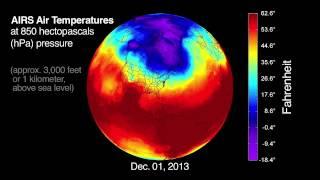
Polar Vortex Chilling Effects Spied by Heat-Seeking Satellite Cam | Time-Lapse Animation
Added 860 Views / 0 LikesThe weather phenomenon that brought frigid temperatures -- minus 18°F in some places -- to the United States in the first week of 2014 was probed by NASA's Atmospheric Infrared Sounder (AIRS) instrument on NASA's Aqua spacecraft.
-
00:15
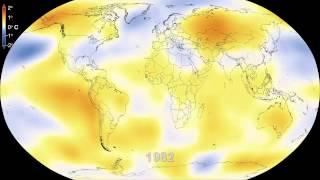
60-Year Global Temperature Visualization Is Distressing | Video
Added 802 Views / 0 LikesSince 1950, average temperatures have increased 1.1°F to an average of 58.3° in 2013. Increase in greenhouse gas levels continue to drive the temperature increase.
-
02:18

Lagoon Nebula is a Sea of Starbirth | Video
Added 777 Views / 0 Likes110 light-years across and 5000 lights year from Earth, the Lagoon Nebula (M8, NGC 6523) is one of just two star-forming regions visible to the unaided eye from the northern hemisphere. Europe's VLT Survey Telescope in Chile capture these images.
-
01:11

Supernova Explosion Seen In Nearby Galaxy | Video
Added 812 Views / 0 LikesThe light from an exploding star in the Messier 82 (M82) galaxy was first photographed from Earth on January 22nd, 2013. The galaxy is ~12 million light years away so the explosion occurred about 12 million years ago.
-
03:06
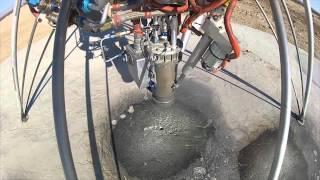
Xombie Rocket Diverts Itself To New Landing Pad | Video
Added 1,017 Views / 0 LikesNASA's Jet Propulsion Laboratory tested its G-FOLD divert algorithm experimental landing system aboard the Masten rocket in Sept. 2013. This algorithm allows the rocket to autonomously select an alternate landing site.
-
02:30
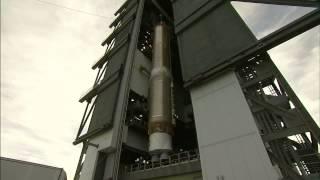
'Fat Pipe' For Astronauts Coming Via New TDRS Sat | Video
Added 772 Views / 0 LikesThe third generation advanced Tracking and Data Relay Satellite (TDRS-L) will deliver a boost in transmitting power and a higher frequency band for video and data. It is set to launch on January 23rd, 2014.TDRS-L and Atlas V Readied for Liftoff
-
02:15
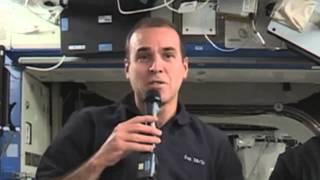
NASA Launching Five Missions Devoted To Earth Science In 2014 | Video
Added 851 Views / 0 Likes2014 is shaping up to be the year of earth science for NASA, with five missions devoted to studying our planets surface, atmosphere, changing climate, weather, and more.
-
03:54

Spacecraft Hull-Crawling Robots: Are These Their Ancestors? | Video
Added 648 Views / 0 LikesEngineers have developed wall-crawling robots utilizing 'dry adhesive' technology inspired by gecko lizards. ESA and the Simon Fraser University are pioneering the effort for their possible use in space.
-
03:11
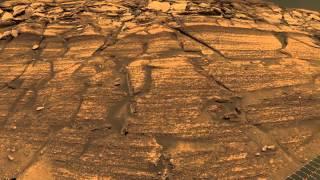
Opportunity On Mars: Science Its Performed | Video
Added 830 Views / 0 LikesAfter 10 years on the Martian surface, the rover continues to deliver new discoveries about the 4th planet from the Sun. Here are some of the highlights.
-
02:45

Opportunity On Mars: Stories From Rover Control | Video
Added 800 Views / 0 LikesSome of the engineers were still in school when the the Spirit and Opportunity landed on Mars. Today they are living out their dream and extending the original 90-day mission to 10+ years. Hear their stories.
-
03:05
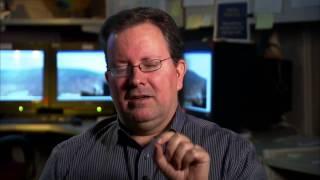
Opportunity On Mars: Problems The Rovers Faced | Video
Added 839 Views / 0 LikesThe harsh conditions have created issues with a piece of machinery that has not been serviced by human hands in over 10 years. The Opportunity team discusses what they have had to contend with.
-
03:13

Life On Mars Sim: Crew Copes with High Dry Utah | Exclusive SPACE.com Video
Added 825 Views / 0 LikesMarsCrew134 is simulating the life of engineers and scientists in the harsh conditions of Mars. Crew Commander Ashley Dale talks about the mission and introduces his team.
-
03:24

Weird 'Jelly Doughnut' Rock on Mars Explained | Video
Added 786 Views / 0 LikesEven 'Star Trek' actor William Shatner wants to know about the weird "jelly doughnut" rock on Mars found by NASA's Opportunity rover. Steve Squyres, Principal Investigator of the Mars Exploration Rover Program explains.
-
03:13

Life On Mars Sim: 'Terraforming' Utah To Grow On Mars | Video
Added 712 Views / 0 LikesMarsCrew134 is simulating the exploration of Mars in high altitude Utah. Crew scientist Michaela Musilova is adding organisms from Earth's extreme environments to the Utah soil samples to create organics, and important step in terraforming Mars.
-
02:20

Curiosity: Mars Radiation Not Too High For Humans (but..) | Video
Added 819 Views / 0 LikesThe Mars Science Laboratory radiation detector, in operation for over a year on the Red Planet, is showing levels that are manageable for human exploration but the planet has not been hit with any big solar storms during this time.
-
02:22
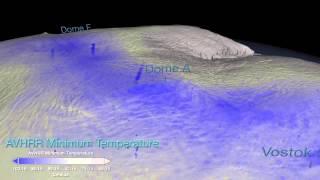
Coldest Place On Earth - NASA Finds It | Video
Added 774 Views / 0 LikesData from several NASA satellites have been analyzed and the lowest temperature detected was a record breaking -136° F (-93.2° C) on Aug 10th, 2013 on a high ridge in Antartica. Its ~8°F degrees cooler than the previous record.
-
04:37
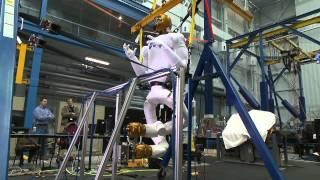
Space Station Robonaut To Get Legs | Video
Added 720 Views / 0 LikesRobonaut 2 (R2) is having its legs tested on the ground while the rest of the robot is undergoing experimental trial on the ISS. The legs will provide mobility necessary for tasks inside and out of Space Station.
-
01:01

How Earth Produces Its Coldest Temperatures | Video
Added 762 Views / 0 LikesA new record for cold temperatures minus 136 F (minus 93.2 C) was set Aug. 10, 2010 on the East Antarctic Plateau. NASA scientists have figured out how our planet creates these bone chilling temperatures.
-
02:20

Starship-Style Earth Fly-By From Jupiter-Bound Probe | Video
Added 828 Views / 0 LikesThis cosmic pirouette of Earth and our moon was captured by the Juno spacecraft as it flew by Earth on Oct. 9, 2013. Set be inserted into Jupiter orbit in August 2016.
-
04:25
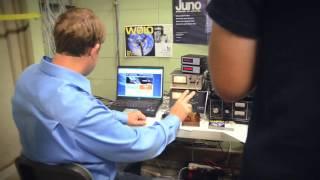
Hi Juno! Ham Radio Operators Call NASA's Jupiter Spacecraft | Video
Added 792 Views / 0 LikesSee how amateur ham radio operators beamed messages to NASA's Jupiter-bound Juno spacecraft during its Earth flyby of Oct. 9, 2013. Did their morse code messages of hello reach Juno? --- Juno's Earth and Moon Fly-by Time-lapse: http://goo.gl/qzY5gr Credit
